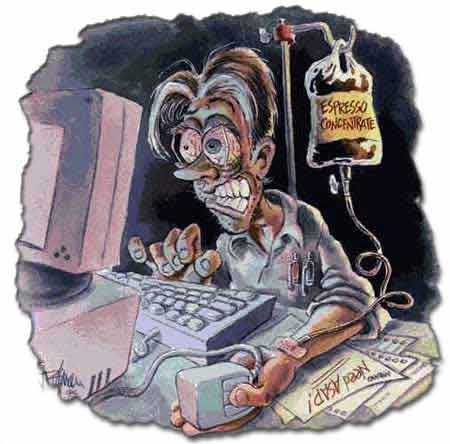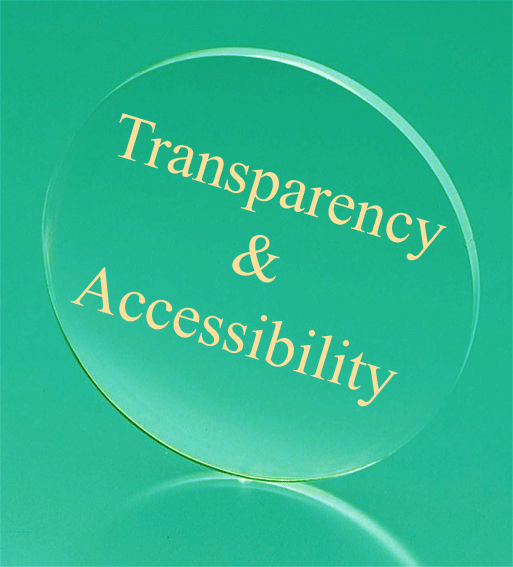A research team at the National Institute of Standards and Technology, in cooperation with researchers at The Johns Hopkins University, Dartmouth College, the University of Manitoba and two biopharmaceutical companies have discovered that sugar-coated bits of iron oxide under certain circumstances can be deadly to tumors. The 100 nanometer wide sugar-coated iron oxide nanoparticles are attracted to tumor cells, where they can be heated magnetically, thus causing damage to the cells.
(more…)
Blog
-
Sugar-Coated nanoparticles hold promise for cancer treatment
-
Thinking about Clinical Decision Support (CDS)
I attended at webinar today on “Achieving Meaningful Use – The Importance of Clinical Decision Supportâ€. Overall the information was pretty good. It wasn’t exactly new information, but it never hurts to hear something again. The webinar got me thinking about Clinical Decision Support (CDS).
(more…) -
Non-traditional roles for pharmacists
The increased chatter surrounding healthcare has piqued my interests in job opportunities for pharmacists outside the traditional roles, i.e. retail, hospital, IT, long-term care, etc. Physicians have been filling many of these roles for quite some time. For more information on physicians in non-traditional roles I recommend visiting Non-Clinical Medical Jobs, Careers, and Opportunities by Dr. Joseph Kim. It was Dr. Kim’s site that put my mind into overdrive.
Much of my interest in these non-traditional pharmacy jobs stemmed from various internet articles on advances in healthcare technology from companies like Microsoft, Google, and GE among others. These companies are developing some very interesting technology and have jobs posted that require a pharmacy degree.
Over the past several months I’ve applied for positions at several of these companies, but haven’t heard so much as a peep from most of them. Microsoft gets some brownie points because they were kind enough to send me a nicely worded rejection notice in the form of an email.
Anyway, pharmacists have a unique perspective when it comes to process design in healthcare and several of the “movers and shakers†in the industry have started to take notice. For those of you interested in something other than a traditional role in pharmacy know that there are positions out there that may interest you. All you have to do is look.
-
For those that need a reason to support CPOE and EMR implementation
Pharmacists see hand written orders like the one below almost daily. The order has to be interpreted by a pharmacist, usually with a little hand waving and guessing (kind of like being a pharmacy Jedi), and entered on the patient’s medication profile before the nurse can access the medication from the automated dispensing cabinet and get it to the patient. Even though I’m used to looking at orders like this, there is simply no excuse for what you see below.
There are two medications contained in the hand written orders below. I double-dog dare you to find them. It’s kind of like a “Where’s Waldo†puzzle. Leave your guesses in the comment section of this post. Good luck.
.
-
Great new idea for “InkPad” at GottaBeMobile
Matthew Dillon at GottaBeMobile has come up with a great concept for a new tablet device that he calls “ink padâ€. The most entertaining thing about the concept is that I have designed several of these on paper over the years myself. My scribbles are recorded in various notebooks lying around the house. Like Matthew, I too love Tablet PCs but have always felt that there is still a yet to be developed device that would be better.
(more…) -
Cool Technology for Pharmacy
 The InstyMeds Prescription Medication Dispenser is a fully automated prescription dispensing machine. It is  designed to be used in high traffic areas where quick medication turnaround is desired and a physical pharmacy is unavailable, such as emergency departments (ED) and acute care clinics.
The InstyMeds Prescription Medication Dispenser is a fully automated prescription dispensing machine. It is  designed to be used in high traffic areas where quick medication turnaround is desired and a physical pharmacy is unavailable, such as emergency departments (ED) and acute care clinics.The dispenser has just over 100 medication slots that can each hold a medication magazine with up to 11 prepackaged medication bottles. The formulary for the InstyMeds machine is site specific and designed by the InstyMeds Corporation. Items in the example formulary that I viewed included amoxicillin capsules, amoxicillin suspension, Auralgan otic drops, Z-Pak, Augmentin, acetaminophen tablets and elixir, ibuprofen, Vicodin, Darvocet, etc. All the items you would expect from a short visit to the ED or for little Joey with an ear infection at the urgent care. The formulary in the InstyMeds machine can be altered based on seasonal trends and inventory replacement is automatically  shipped to the location when needed based on real time inventory tracking. In addition, consumables such as printer paper are also automatically tracked by the InstyMeds Corporation via an internal web cam.
(more…) -
All roads lead to Rome, err….I mean Twitter.
 Until the next big thing comes along Twitter is king. That’s why I found this Tweet from Robert Scoble so interesting. The Tweet itself simply let me to a blog article written by Louis Gray. The blog discusses two distinctly different approaches to sharing information; Louis Gray’s approach versus Robert Scoble.
Until the next big thing comes along Twitter is king. That’s why I found this Tweet from Robert Scoble so interesting. The Tweet itself simply let me to a blog article written by Louis Gray. The blog discusses two distinctly different approaches to sharing information; Louis Gray’s approach versus Robert Scoble.Louis utilizes Google Reader to collect and sort various RSS feeds. Any story, blog, article, etc. that he finds interesting get pushed to Twitter via the share feature in Google Reader (see the graphical representation at Louis’ site).
In the other corner you have Robert “using not RSS, but Twitter, to share the best of the technology Web as it streams on his screen.†Robert appears to be making extensive use of his Twitter Favorites.
(more…) -
Are e-patients better informed or just harder to treat?
I found an interesting article at EHR Bloggers that talks about the possibility of easy access to information via the internet resulting in difficult-to-treat patients and higher healthcare costs.
The concern raised in the NPR article describes the effect of information dissemination without context or interpretation – it happens anyway, with direct-to-consumer advertising in all forms of media, and it happens even faster with the Internet. And when patients, armed with these “facts†and the questions they raise, come to their physicians – the physician is often hard-pressed to put things into perspective. The result? Often, very-low-yield tests (or even unnecessary tests that raise the risk of harm through adverse events) and unnecessarily expensive treatments are agreed-to, simply because it’s the path of least resistance.
The problem isn’t with informed patients; it’s the model we’ve developed in our current healthcare system. The article speaks about limited time for physicians secondary to fee-for-service care. This is similar to what retail pharmacies have done with much of outpatient pharmacy services. Most retail pharmacists will tell you they spend more time fighting with insurance companies then they do talking with patients about their medications. One of the most enjoyable times of my pharmacy career was a short stint I spent working for a small independent pharmacy in San Jose. The owner/pharmacist that I worked with had a genuine interest in his patients, knew them by name and offered sound therapeutic advice. His patients appreciated his time and knowledge and were better informed to make important decision because of it.
The article goes on to offer some thought provoking ideas for closing the gap between our current healthcare model and well informed patients. It’s interesting stuff. If you have a moment I recommend you read the entire thing.
-
Lexi-comp making headway on drug information software for the Palm Pre
 Earlier today Lexi-comp offered a sneak peak of their new drug information software for the Palm Pre. That’s exciting news for all you Palm Pre owners out there. Lexi-comp offers one of the most comprehensive drug information packages available and is certainly a favorite among pharmacists.
Earlier today Lexi-comp offered a sneak peak of their new drug information software for the Palm Pre. That’s exciting news for all you Palm Pre owners out there. Lexi-comp offers one of the most comprehensive drug information packages available and is certainly a favorite among pharmacists.The Palm Pre is a great device to use as a peripheral brain for pharmacists because it allows you to keep several applications open at once. That’s a nice feature to have when you need to access something quickly.
The one thing I would ask Palm to do to improve the Pre is offer a form of the device in the image of the HTC HD2 with its massive screen. The screen on the current Pre is just a tad bit small for my taste. Even better would be if Palm would offer the device without 3G service like the iPod Touch. It’s just a thought.

